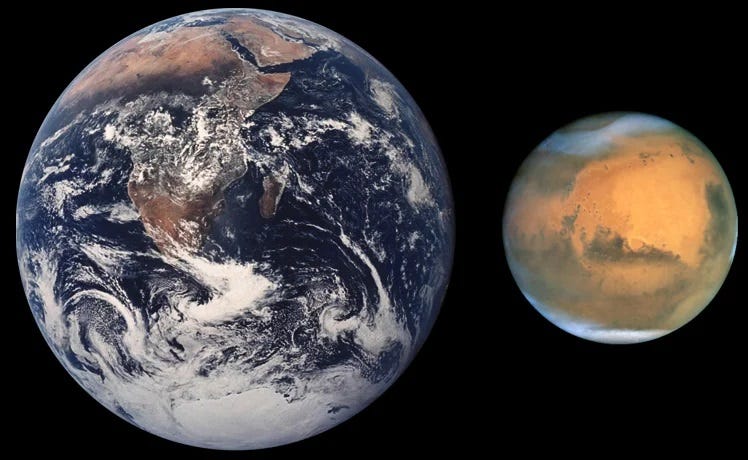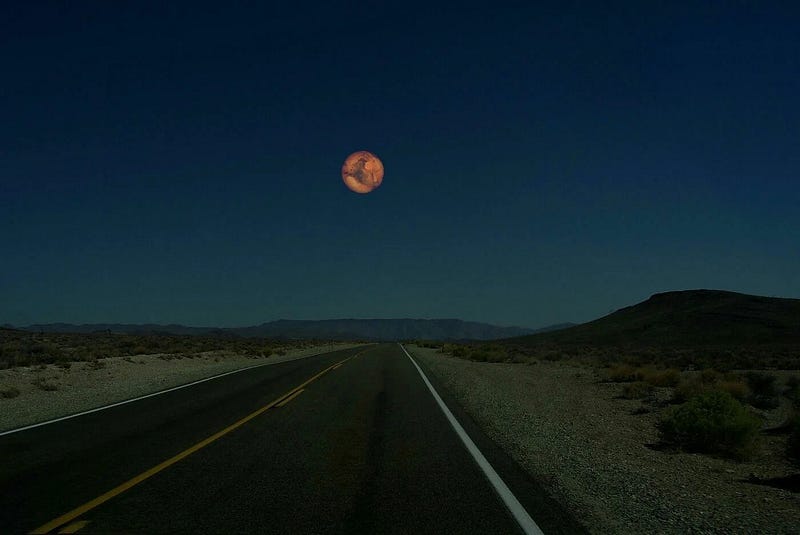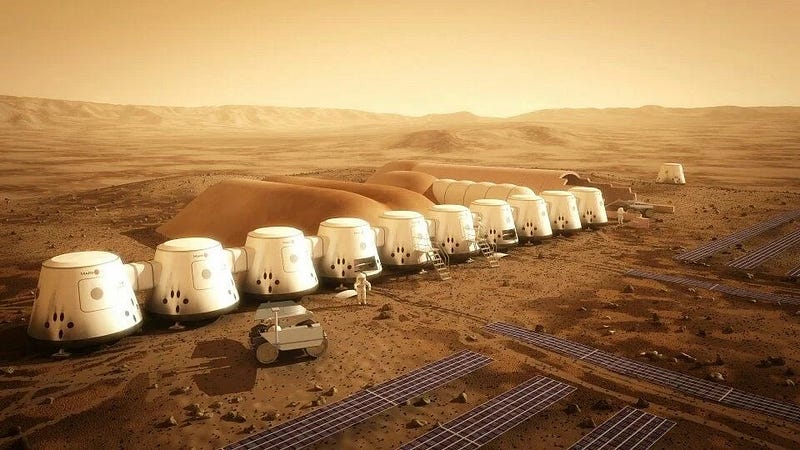What If Mars Became Earth's Moon? Exploring the Consequences
Written on
Chapter 1: Hypothetical Scenarios of Mars as Earth's Moon
In our ongoing series of speculative inquiries, we delve into a fascinating question: What if Mars were to abandon its orbit and move toward Earth? Is it feasible for Earth to capture Mars as a satellite? Let's explore the implications of such an event.
It’s important to note that Mars cannot simply break free from its orbit without the influence of another massive celestial body. In our Solar System, the orbits of planets are remarkably stable, and there are currently no indications of any disruptive forces. However, such a scenario could unfold if a rogue planet were to traverse through our Solar System.

Should Mars somehow stray from its path and be ensnared by Earth's gravity, two primary outcomes could occur: The Moon might collide with Mars or its moons, resulting in catastrophic debris falling to Earth, leading to widespread destruction. This scenario is more probable. Alternatively, Mars’s gravitational pull could displace the Moon, removing it from Earth’s orbit and placing it into orbit around the Sun—this scenario is less likely.

Rather than dwell on the first, less intriguing scenario, let’s consider the second. For simplicity, let’s assume that the Moon and Mars's moons, Phobos and Deimos, are displaced, and Mars occupies the Moon’s previous orbit.
Mars's gravitational strength exceeds that of the Moon, suggesting that it wouldn't merely function as a satellite of Earth. Instead, Earth and Mars would orbit a shared center of mass—the barycenter. In this arrangement, Earth and Mars would form a double-planet system, as the barycenter would lie outside of Earth, which contradicts the traditional definition of a planet-satellite relationship.

An existing example of this type of system is found in the Pluto-Charon relationship, where both bodies orbit a common center of gravity located outside Pluto itself. Over time, Mars and Earth could eventually synchronize in a tidal lock, constantly presenting the same face toward one another. However, this alignment would not occur rapidly, potentially requiring hundreds of millions to billions of years.

Mars's albedo, or reflectivity, is slightly greater than that of the Moon, and its diameter is twice as large. Consequently, if Mars were to take the Moon's position, it would shine brightly as a reddish sphere in the night sky, significantly illuminating the darkness.

The gravitational influence of Mars would result in much stronger tides, leading to an increase in tsunami activity, altering coastlines dramatically, and potentially causing flooding in various regions.

As Mars would be positioned closer to the Sun, it would receive significantly more solar energy, transforming its climate. Within a relatively short span (1,000 to 10,000 years), frozen carbon dioxide on Mars's surface would likely thaw, thickening the atmosphere. Given that carbon dioxide is a greenhouse gas, this enriched atmosphere would create a greenhouse effect, further warming Mars.
This warming could lead to the melting of water ice, potentially forming liquid bodies of water. In time, this could allow humans to explore Mars without cumbersome spacesuits—just breathing masks might suffice.

Finally, thanks to Mars's proximity, full-scale colonization and development of the planet could become a reality.

Further advancements in transforming Mars could be achieved through introducing Earth-based bacteria and plants to enrich its atmosphere with oxygen. However, as previously stated, there are no signs that Mars's orbit will ever change, and the likelihood of catastrophic scenarios remains much higher. Therefore, it may be best for Mars to stay where it is, while we make our journey to it.
In the first video, "If Mars Became a Moon of Earth," the creators delve into the ramifications of Mars taking the Moon's place, exploring various outcomes and their implications.
The second video, "What If Each Planet Replaced Our Moon?" examines how the dynamics of our solar system would shift if other planets assumed the Moon's role, offering additional insights into our cosmic neighborhood.
If you’re intrigued by these cosmic possibilities, clap to see more space-related articles in your feed! Don’t forget to subscribe to our channel and pose your questions, which I’ll address in future pieces. If you appreciate my work, consider supporting me by joining Medium for just $5 a month, enabling us to produce even better content.